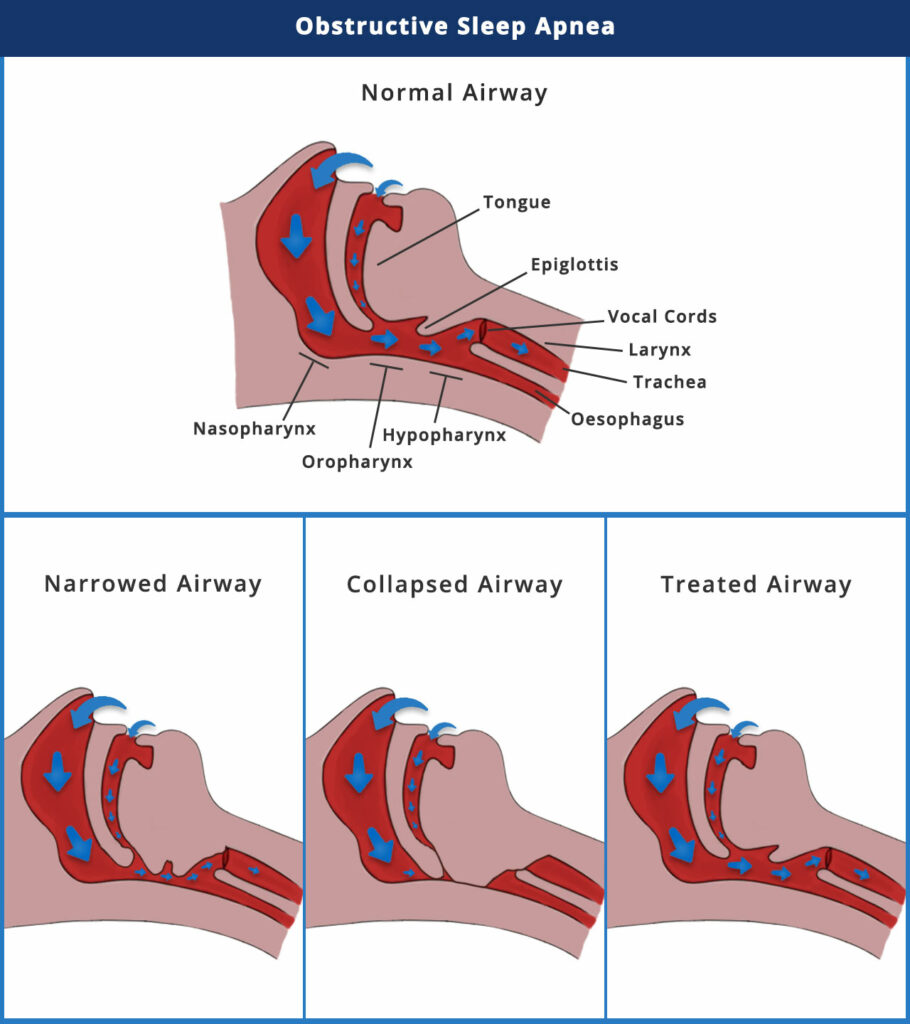our drug & science
Obstructive sleep apnea (OSA) is one of the largest unmet medical needs because of the major shortcomings of available treatments.
Our approach will revolutionize the treatment of OSA by offering an easy and familiar alternative — taking a pill before bedtime.
WHAT IS THE DISEASE?
OSA is a serious, potentially life-threatening unmet medical need affecting 54 million adults aged 30-69 years in the US, and nearly 1 billion adults globally. The disease is characterized by temporary pauses in breathing due to intermittent closure of the upper airway during sleep.
The direct consequences of OSA are disruption of sleep quality and reduction of oxygen/carbon dioxide exchange resulting in low blood oxygen levels. Untreated OSA often results in an increased risk of cardiovascular diseases, hypertension, increased obesity, insulin resistance and diabetes, stroke, cognitive dysfunction, depression, and daytime drowsiness.
It is also generally connected to snoring, which often disrupts the sleep of those around the OSA sufferer.
Current treatments
The current “gold standard” of care is Continuous Positive Airway Pressure (CPAP), a machine involving a mask and a pump compressor that supplies air to the airway to keep it open during sleep. Upper airway nerve simulator implants (Inspire®) is another emerging treatment for OSA. There are many oral appliances designed to reposition the jaw or tongue to keep the airway open during sleep.
Despite many of them being effective, all of these treatments have considerable drawbacks, including inconvenience, discomfort, surgical invasiveness, modest effectiveness, and/or high cost, resulting in low patient compliance and adherence. Currently, the majority of patients (~90%) are still untreated, leaving OSA still a largely unmet medical need.
The current “gold standard” of care is Continuous Positive Airway Pressure (CPAP), a machine involving a mask and a pump compressor that supplies air to the airway to keep it open during sleep. Upper airway nerve simulator implants (InspireR) is another emerging treatment for OSA. There are many oral appliances designed to reposition the jaw or tongue to keep the airway open during sleep.
Despite many of them being effective, all of these treatments have considerable drawbacks, including inconvenience, discomfort, surgical invasiveness, modest effectiveness, and/or high cost, resulting in low patient compliance and adherence. Currently, the majority of patients (~90%) are still untreated, leaving OSA still a largely unmet medical need.
MECHANISM
The direct cause of OSA is blockage of airflow in the upper airway, which is resulted from its repetitive collapse. The upper airway is comprised of soft tissues and muscles, with the tongue as the largest. The tissues and muscles form a channel for air movement into the lung. Rhythmic respiratory contractions generate negative pressure, which naturally induces a tug on soft tissues and muscles, leading to the collapse of the airway, if the airway muscles can’t resist the pulling force.
Muscles naturally lose their tonicity gradually after the age of 30. The rate of decline is accelerating after the age of 60. Furthermore, during sleep, body muscles, including the upper airway muscles, naturally become relaxed (“weak muscles”), thus, increasing the chance of collapsing and leading to apnea events.


OUR DRUG
The Somnia drug targets the acetylcholine pathway, which is the most well-known mechanism for controlling muscle strength. Acetylcholine is a neurotransmitter used at the neuromuscular junction, activating muscles when it is released. The drug works to delay the degradation of acetylcholine at the upper airway muscles in order to maintain the muscle tonicity.
Our drug is based on an existing prescription drug for treating an unrelated orphan disorder. That drug has been on the market for decades and has established an excellent safety profile for chronic use in humans. The drug is expected to have a significantly lower dose than the current allowed daily dosage, making it even safer for use.
Somnia has conducted multiple preliminary proof-of-concept clinical studies on diagnosed OSA patients using a preliminary version of the drug. The results show that the drug is statistically significantly effective in reducing apnea in patients (p < 0.05). To date, all the patients who received the drug responded to the treatment.
Publications
Fan J, Wu H, Chen G, Palling D, et al. Evaluation of an oral drug pyridostigmine bromide in patients with mild to moderate obstructive sleep apnea. Sleep 43 A243-244, 2020.
